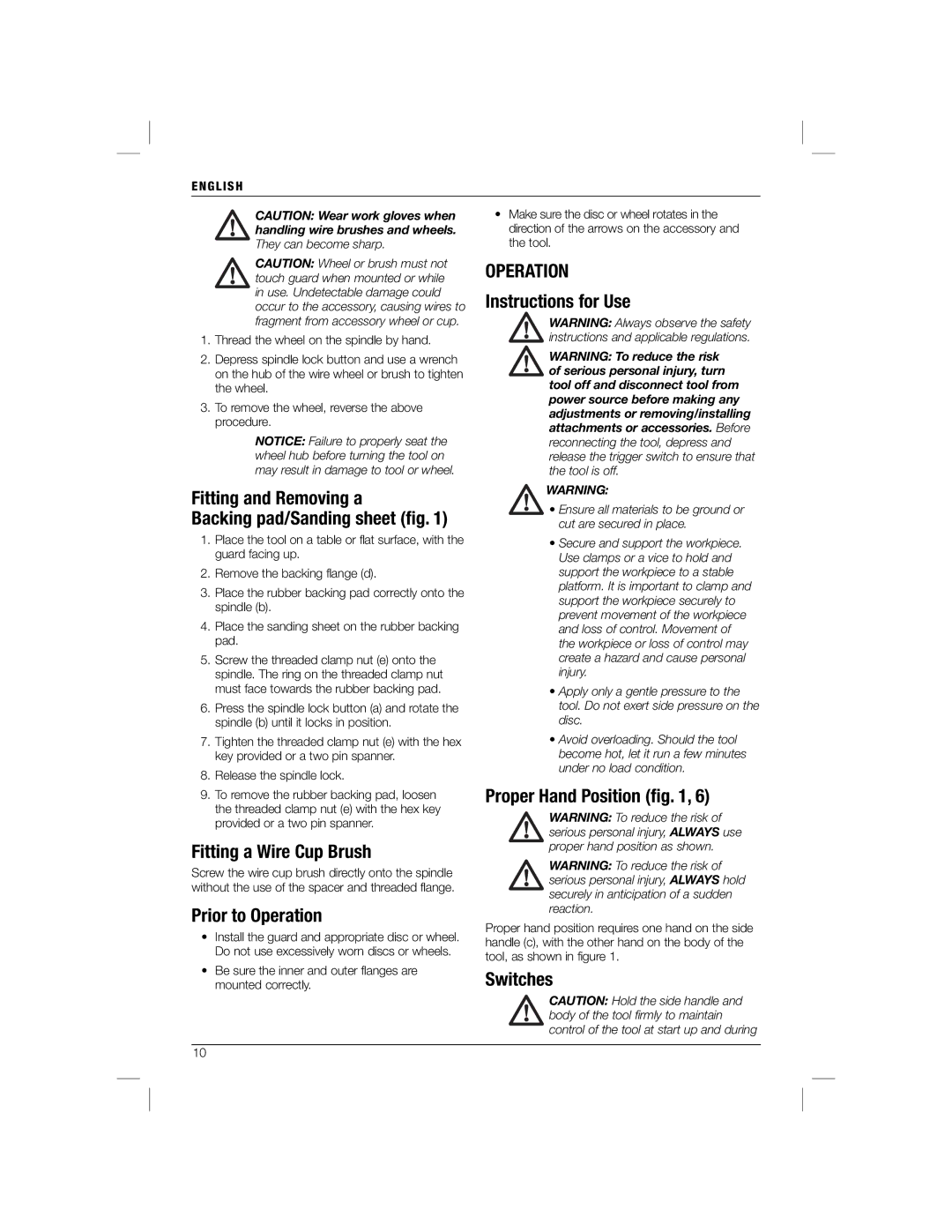DWE4001, DWE4050 specifications
The DeWalt DWE4050 and DWE4001 are powerful and reliable tools designed for professionals and DIY enthusiasts alike. Both models are part of DeWalt's extensive lineup of high-performance grinders, and each offers unique features that cater to various applications in metalworking, construction, and renovation projects.The DeWalt DWE4050 is a compact angle grinder that stands out for its exceptional power-to-weight ratio. It features a 10-amp motor, delivering robust performance that allows users to tackle even the most demanding cutting and grinding tasks. The grinder has a 4.5-inch wheel diameter, making it highly versatile, and its ergonomic design ensures comfort during extended use. An innovative dust ejection system adds to its durability by preventing debris from entering the internal components, reducing wear and tear over time.
On the other hand, the DeWalt DWE4001 is designed for those who seek an advanced feature set. It also boasts a 10-amp motor but comes with additional capabilities for enhanced performance. The DWE4001 features an automatic restart protection system that prevents the tool from starting unexpectedly after a power interruption, which is crucial for user safety. Its slim, ergonomic body enhances maneuverability in tight spaces, and the two-position side handle provides added control and comfort during operation.
Both grinders incorporate DeWalt's advanced protection technology, which helps to prevent overheating and prolongs motor life. The precision-engineered gears are designed for durability and strength, allowing users to work confidently with different materials.
Further, the DWE4050 and DWE4001 have adjustable guards that allow for efficient grinding and cutting in various angles, thus improving overall versatility. Their spindle lock feature facilitates quick and easy wheel changes, ensuring minimal downtime between tasks.
In terms of safety, both models come with a safety lock-off switch to prevent accidental starts, protecting users in hectic work environments. The robust construction of these grinders ensures they can withstand rigorous applications, making them perfect for both professional contractors and home users.
In conclusion, the DeWalt DWE4050 and DWE4001 each offer standout features tailored to different needs, from powerful motors to innovative safety technologies. With their ergonomic designs and durability, these angle grinders are excellent choices for anyone looking to invest in high-quality tools for grinding and cutting applications.

